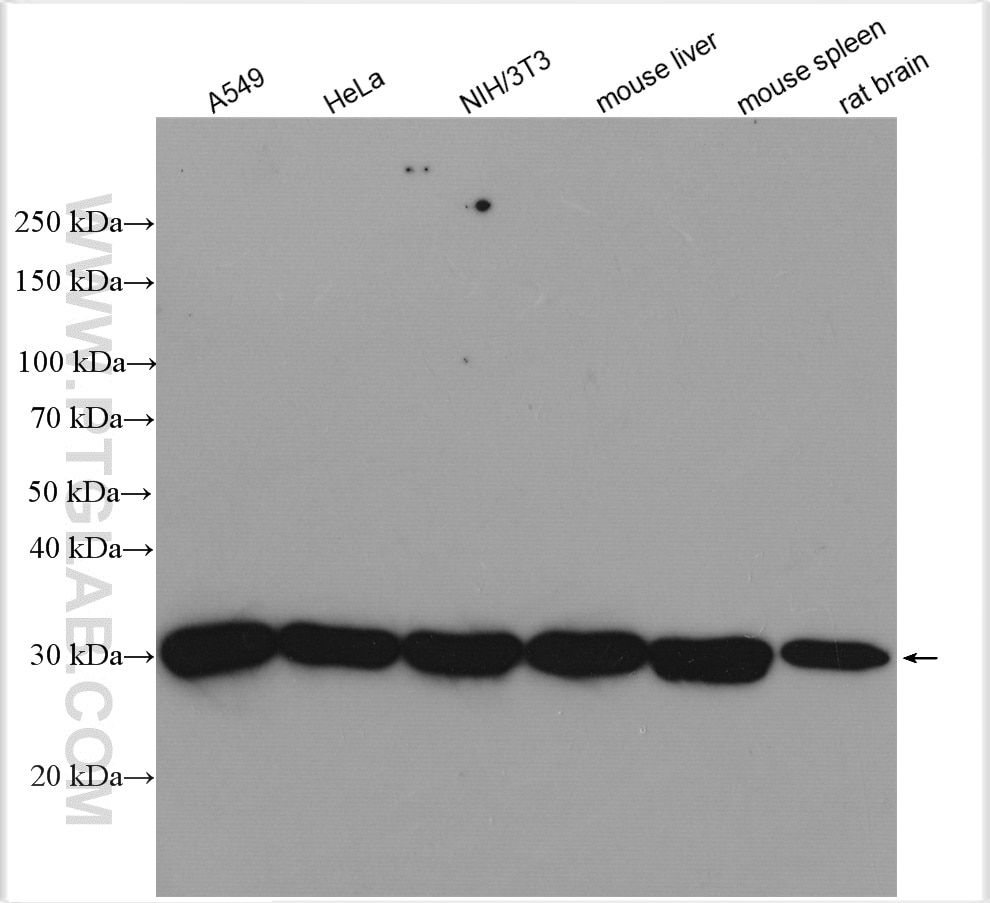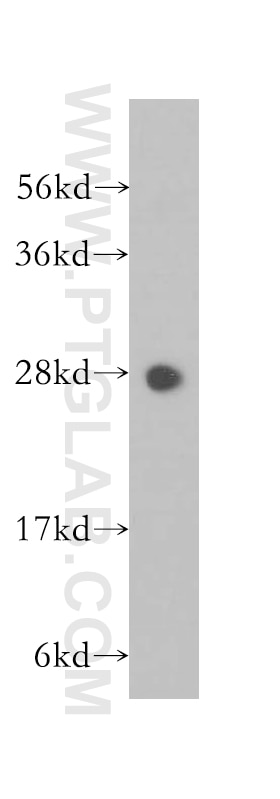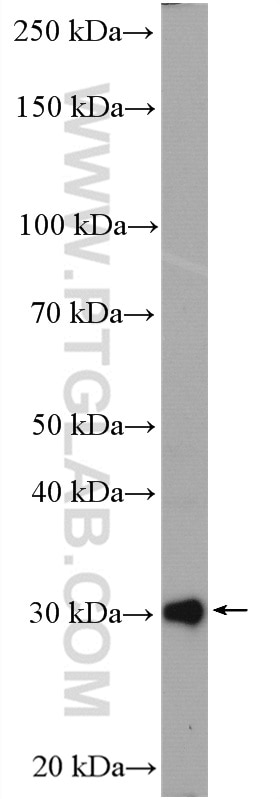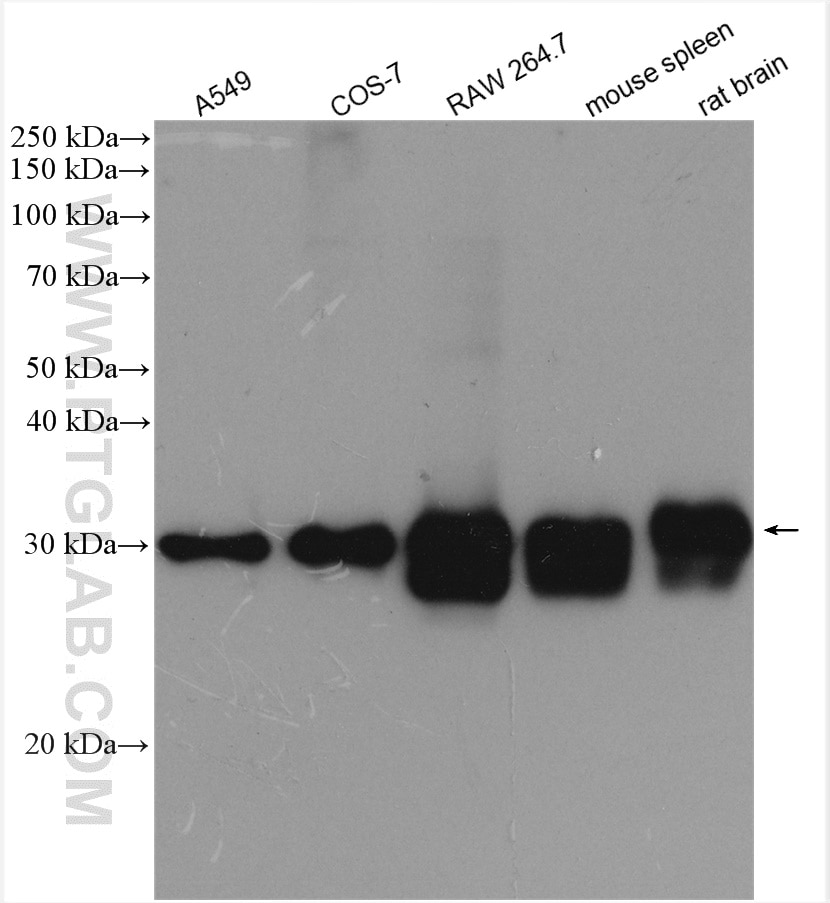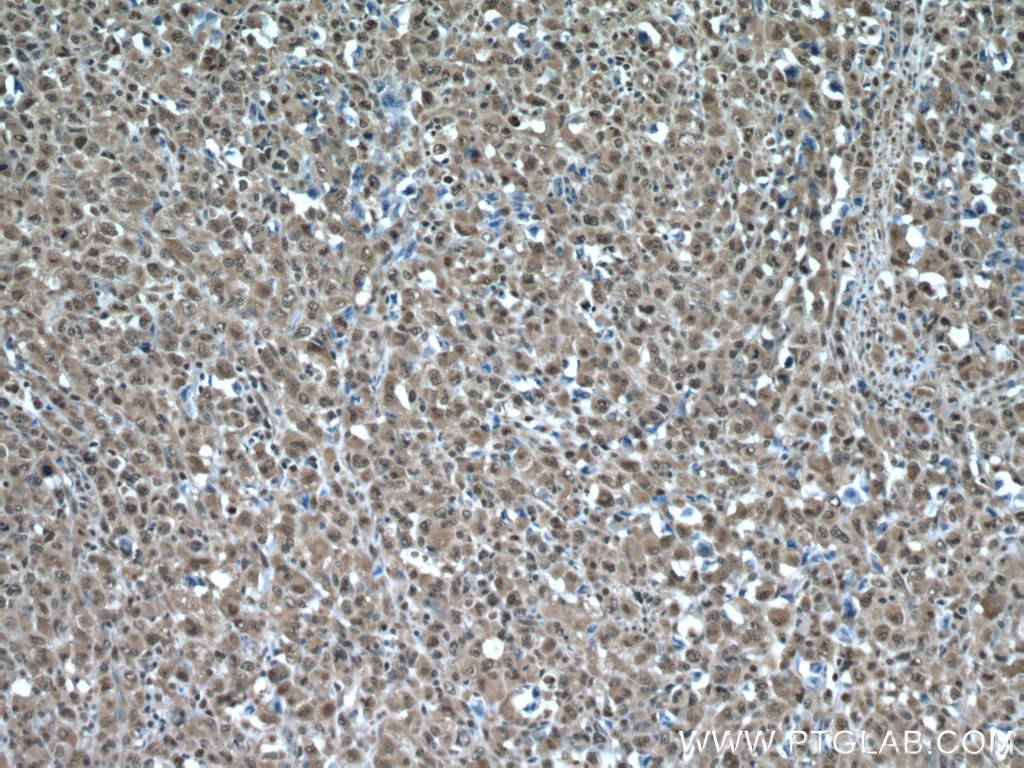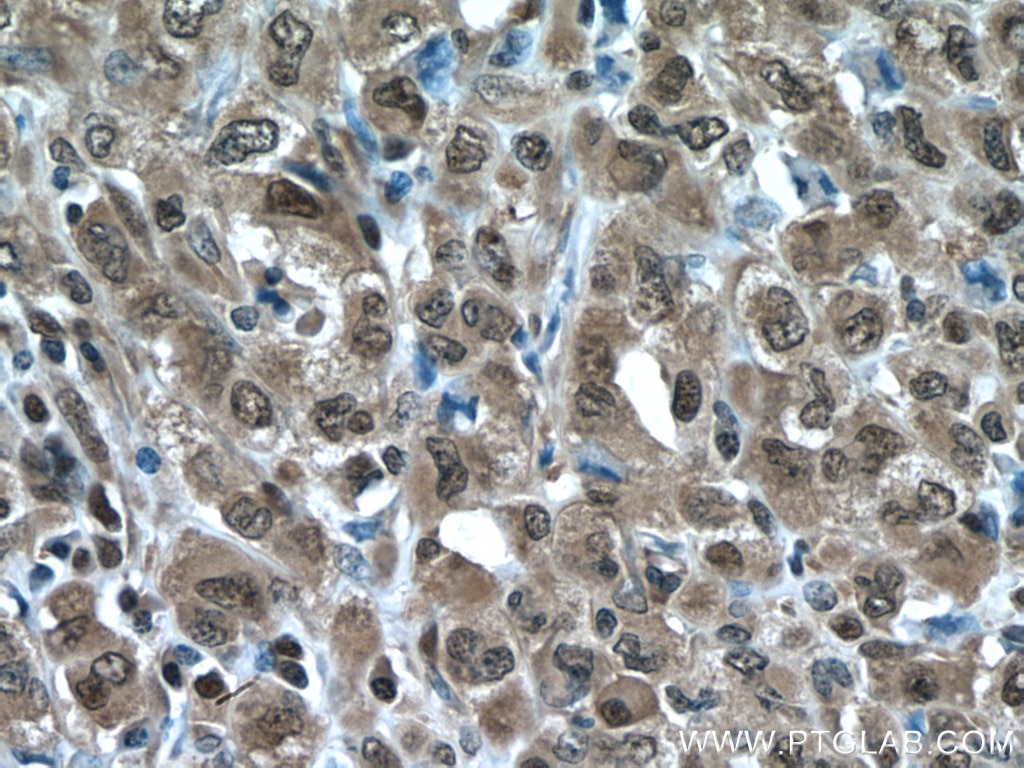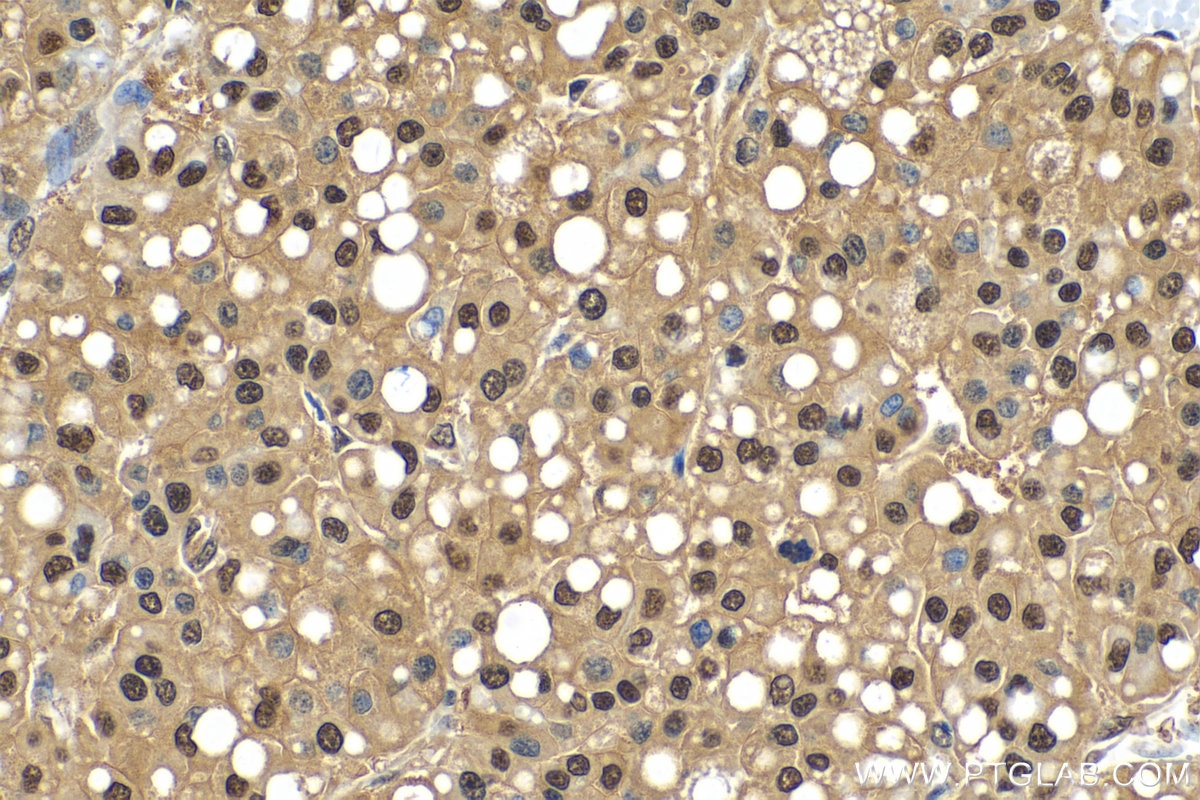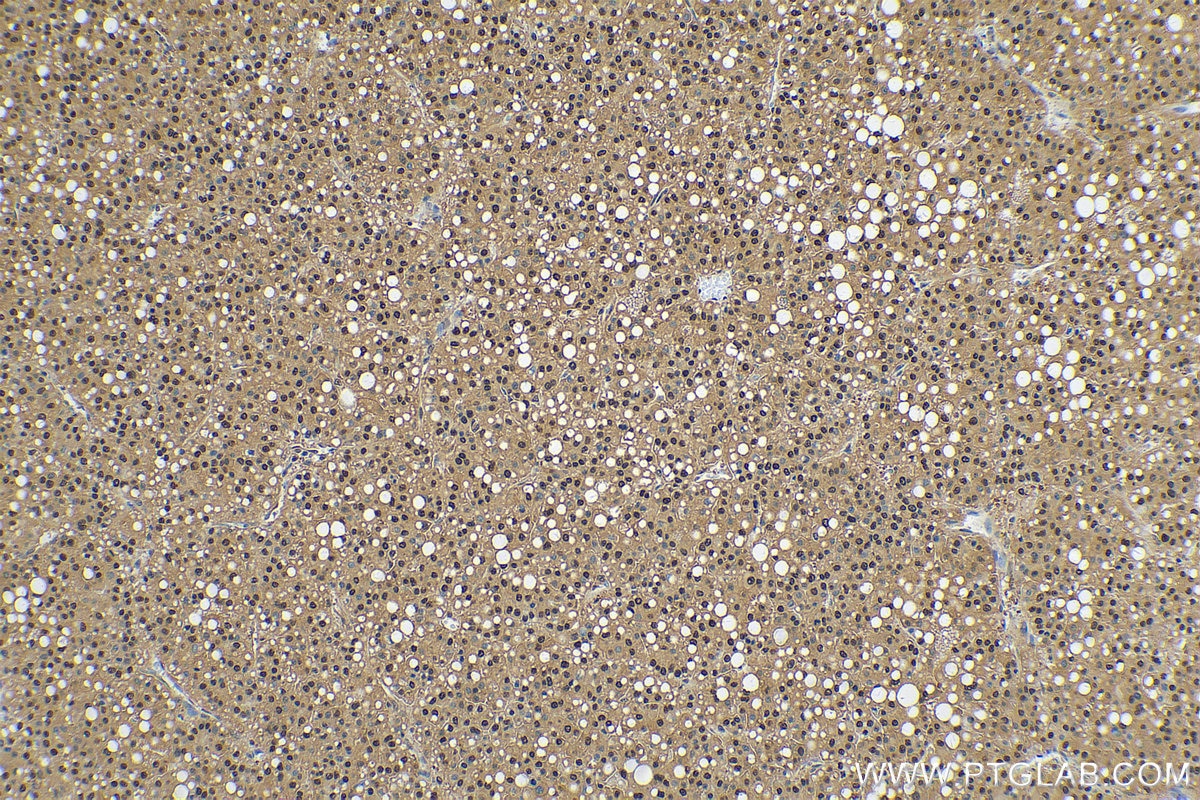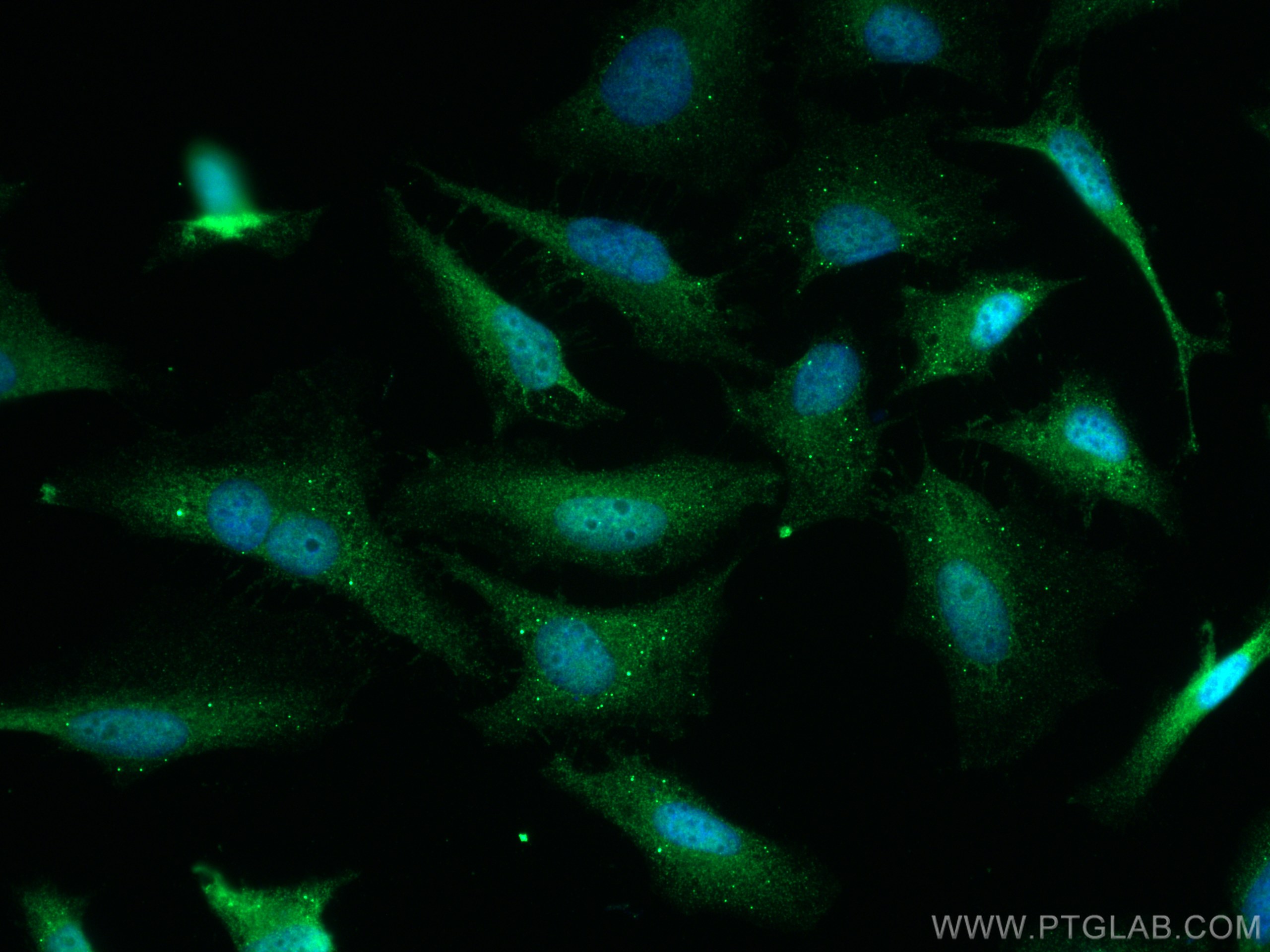Validation Data Gallery
Tested Applications
| Positive WB detected in | A549 cells, PC-12 cells, human lung tissue, COS-7 cells, RAW 264.7 cells, mouse spleen tissue, rat brain tissue, HeLa cells, NIH/3T3 cells, mouse liver tissue |
| Positive IHC detected in | human lymphoma tissue, human liver cancer tissue, mouse brain tissue Note: suggested antigen retrieval with TE buffer pH 9.0; (*) Alternatively, antigen retrieval may be performed with citrate buffer pH 6.0 |
| Positive IF/ICC detected in | HeLa cells |
Recommended dilution
| Application | Dilution |
|---|---|
| Western Blot (WB) | WB : 1:1000-1:8000 |
| Immunohistochemistry (IHC) | IHC : 1:200-1:500 |
| Immunofluorescence (IF)/ICC | IF/ICC : 1:200-1:800 |
| It is recommended that this reagent should be titrated in each testing system to obtain optimal results. | |
| Sample-dependent, Check data in validation data gallery. | |
Published Applications
| WB | See 4 publications below |
| IF | See 1 publications below |
| ELISA | See 1 publications below |
Product Information
11887-1-AP targets PSMA3 in WB, IHC, IF/ICC, ELISA applications and shows reactivity with human, mouse, rat, monkey samples.
| Tested Reactivity | human, mouse, rat, monkey |
| Cited Reactivity | human, mouse |
| Host / Isotype | Rabbit / IgG |
| Class | Polyclonal |
| Type | Antibody |
| Immunogen |
CatNo: Ag2495 Product name: Recombinant human PSMA3 protein Source: e coli.-derived, PGEX-4T Tag: GST Domain: 1-255 aa of BC029402 Sequence: MSSIGTGYDLSASTFSPDGRVFQVEYAMKAVENSSTAIGIRCKDGVVFGVEKLVLSKLYEEGSNKRLFNVDRHVGMAVAGLLADARSLADMAREEASNFRSNFGYNIPLKHLADRVAMYVHAYTLYSAVRPFGCSFMLGSYSVNDGAQLYMIDPSGVSYGYWGCAIGKARQAAKTEIEKLQMKEMTCRDIVKEVAKIIYIVHDEVKDKAFELELSWVGELTNGRHEIVPKDIREEAEKYAKESLKEEDESDDDNM 相同性解析による交差性が予測される生物種 |
| Full Name | proteasome (prosome, macropain) subunit, alpha type, 3 |
| Calculated molecular weight | 255 aa, 28 kDa |
| Observed molecular weight | 28 kDa |
| GenBank accession number | BC029402 |
| Gene Symbol | PSMA3 |
| Gene ID (NCBI) | 5684 |
| RRID | AB_2171420 |
| Conjugate | Unconjugated |
| Form | |
| Form | Liquid |
| Purification Method | Antigen affinity purification |
| UNIPROT ID | P25788 |
| Storage Buffer | PBS with 0.02% sodium azide and 50% glycerol{{ptg:BufferTemp}}7.3 |
| Storage Conditions | Store at -20°C. Stable for one year after shipment. Aliquoting is unnecessary for -20oC storage. |
Background Information
PSMA3(Proteasome subunit alpha type-3) is also named as HC8, PSC8 and belongs to the peptidase T1A family. The proteasome is a multicatalytic protease complex that catalyzes an energy-dependent, extralysosomal proteolytic pathway responsible for selective elimination of proteins with aberrant structures and naturally occurring short-lived proteins related to metabolic regulation and cell cycle progression. It has 2 isoforms produced by alternative splicing.
Protocols
| Product Specific Protocols | |
|---|---|
| IF protocol for PSMA3 antibody 11887-1-AP | Download protocol |
| IHC protocol for PSMA3 antibody 11887-1-AP | Download protocol |
| WB protocol for PSMA3 antibody 11887-1-AP | Download protocol |
| Standard Protocols | |
|---|---|
| Click here to view our Standard Protocols |
Publications
| Species | Application | Title |
|---|---|---|
Free Radic Biol Med Identification of an unstable 4-hydroxynoneal modification on the 20S proteasome subunit α7 by recombinant antibody technology. | ||
Clin Transl Med FBXW24 controls female meiotic prophase progression by regulating SYCP3 ubiquitination. | ||
JCI Insight Endothelial extracellular vesicle miR-423-5p regulates microvascular homeostasis and renal function after ischemia-reperfusion injury | ||
Cell Mol Life Sci The insulin-degrading enzyme is an allosteric modulator of the 20S proteasome and a potential competitor of the 19S. | ||
ChemMedChem Pyrazolones Activate the Proteasome by Gating Mechanisms and Protect Neuronal Cells from β-Amyloid Toxicity. | ||

